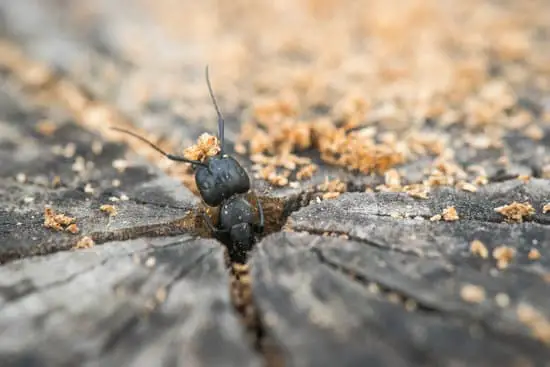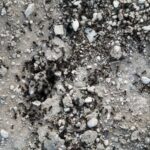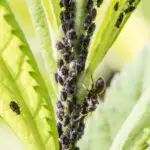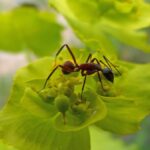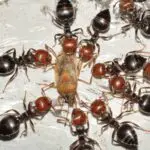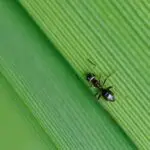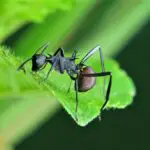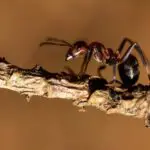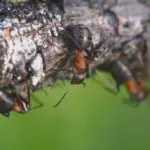Why Do Flying Ants Suddenly Appear?
Have you ever wondered why flying ants suddenly appear in large numbers, especially during the summer months? You may have noticed them swarming around your garden, your window, or even inside your home. What are these winged insects, and what are they doing?
In this article, we will explain the lifecycle of ants, the mating habits of ants, the environmental triggers that cause flying ants to emerge, the geographical differences in flying ant appearances, and how to deal with flying ants if they become a nuisance. By the end of this article, you will have a better understanding of why do flying ants suddenly appear.
Table of Contents
ToggleThe Lifecycle of Ants
Ants are social insects that live in colonies with a complex hierarchy and division of labor. Each colony has one or more queens, who are responsible for laying eggs and producing new ants. The queens are usually the largest and longest-lived ants in the colony.
Most of the ants in a colony are female workers, who perform various tasks such as foraging, building, defending, and caring for the young. The workers are usually wingless and sterile, meaning they cannot reproduce.
Some of the ants in a colony are male drones, who have only one purpose: to mate with new queens. The drones are usually smaller than the workers and have wings. They do not participate in any other activities of the colony and die soon after mating.
The Mating Habits of Ants
Once a year, usually in mid to late summer, a colony of ants will produce a large number of new queens and drones. These are called alates, or winged ants. The alates will leave their nest and take flight in search of mates from other colonies.
This is known as the nuptial flight, or flying ant day. It is not actually a single day, but rather a period of time when the weather conditions are favorable for flying ants to emerge. These conditions include high temperature, high humidity, low wind speed, and clear skies.
During the nuptial flight, the alates will form huge swarms that can be seen from afar. The swarms attract predators such as birds and spiders, but also increase the chances of finding a suitable mate. The alates will mate in mid-air, often with multiple partners.
After mating, the male drones will die, while the female queens will chew off their wings and land on the ground. They will then look for a suitable place to start a new colony. They will dig a hole in the soil or find a crack in a wall or a tree. They will seal themselves inside and lay their first batch of eggs.
The new queens will become the sole founders and rulers of their new colonies. They will not leave their nests again unless they need to relocate due to disturbance or lack of resources. They will rely on their stored fat and wing muscles to survive until their first workers emerge.
Environmental Triggers
The appearance of flying ants is influenced by environmental factors such as weather conditions and time of year. Flying ants need warm and humid weather to fly, as this helps them to spread their wings and avoid dehydration. They also prefer calm and clear weather, as this reduces the risk of being blown away or obscured by clouds.
Flying ants tend to appear after 2 to 4 days of rain, as this creates moist soil that is easier to dig and provides water for hydration. Rain also washes away some of the chemical signals that ants use to communicate and coordinate their flights. This means that more colonies will fly at the same time, creating larger swarms.
Flying ants also follow a seasonal pattern that correlates with their reproductive cycle. In temperate regions such as the UK and Ireland, flying ant day usually occurs between June and September , with July being the peak month. In tropical regions such as Australia and South Africa, flying ant day can occur at any time of year.
Geographical Differences
The timing and frequency of flying ant appearances vary across different locations and regions. This is due to differences in climate, latitude, altitude, and ant species.
For example, in colder regions such as Scotland and Scandinavia, flying ant day tends to occur later in the summer than in warmer regions such as England and France. This is because colder regions have shorter summers and lower temperatures that delay the development and emergence of alates.
In higher altitudes such as mountains and hills, flying ant day tends to occur earlier in the summer than in lower altitudes such as valleys and plains. This is because higher altitudes have lower air pressure and oxygen levels that make flying easier and faster for alates.
In different ant species, flying ant day tends to occur at different times of day and with different frequencies. This is because different ant species have different biological clocks and reproductive strategies that determine when and how often they fly.
For example, black garden ants (Lasius niger), the most common ant species in the UK, usually fly in the afternoon and evening, and only once a year. Red wood ants (Formica rufa), another common ant species in the UK, usually fly in the morning and early afternoon, and several times a year.
Dealing with Flying Ants
Flying ants are not harmful to humans or pets, and they do not damage buildings or plants. They are an important part of the ecosystem, as they provide food for many animals and help to aerate the soil. Therefore, it is best to leave them alone and let them complete their natural cycle.
However, if flying ants become a nuisance or a problem, there are some steps you can take to prevent and deal with them. Here are some tips:
– Seal any cracks or gaps in your walls, windows, doors, or roof that could allow flying ants to enter your home.
– Keep your food and rubbish in sealed containers or bags that do not attract flying ants.
– Use insect repellents or deterrents such as citronella candles, vinegar, or peppermint oil to keep flying ants away from your outdoor areas.
– Use insecticides or traps such as ant powder, ant bait, or sticky tape to kill or capture flying ants if they invade your home. Follow the instructions and safety precautions on the product labels.
– Seek professional pest control services if you have a severe or persistent infestation of flying ants that you cannot handle yourself.
Our top picks for getting rid of ants
These are our 5 TOP picks for getting rid of your ant infestation. These products are carefully selected by our team to give you the most value for your money!
Conclusion
Flying ants are winged ants that emerge from their colonies once a year to mate and start new colonies. They appear in large numbers when the weather conditions are warm, humid, calm, and clear. They follow a seasonal pattern that varies depending on the location and the ant species.
Flying ants are not harmful or dangerous, but they can be annoying or bothersome. You can prevent and deal with them by sealing your home, storing your food and rubbish properly, using repellents or insecticides, or hiring pest control experts.
We hope this article has answered your question of why do flying ants suddenly appear. If you found this article informative and helpful, please share it with your friends and family who may also be curious about flying ants.
